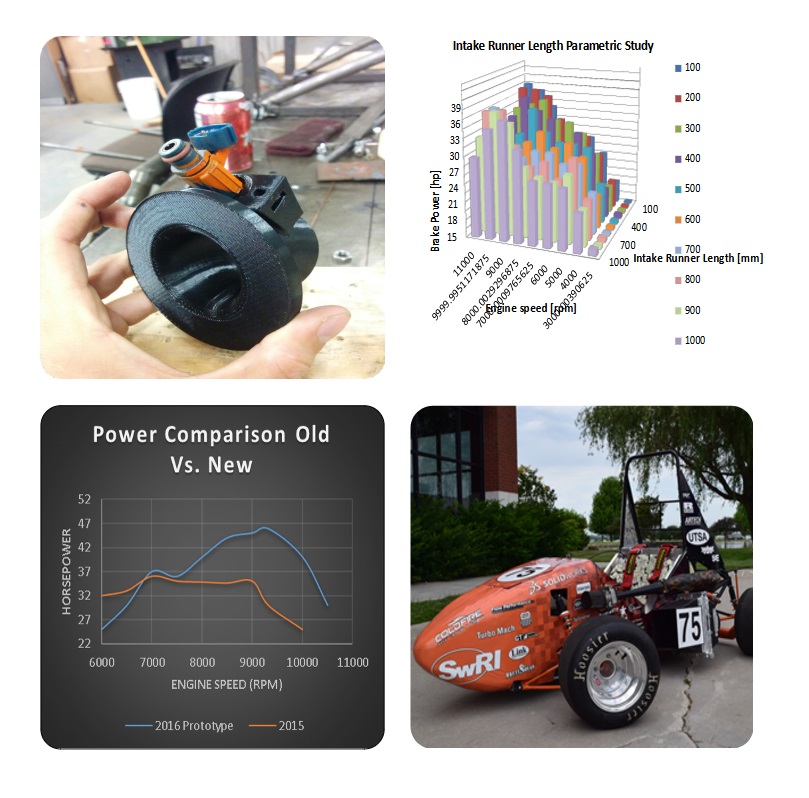
Product Development Engineer: Flowbelow
As Powertrain Lead, I was tasked with finding problems with the previous system and increasing the power output. I used 1-Dimensional Gas Dynamic Software (Ricardo Wave) to analyze changes in geometry throughout the intake system. I created 100+ parametric simulations evaluating adjustable runner length, plenum volume, bend radii, air-fuel ratio, compression ratio, internal roughness, and valve timing. SolidWorks Flow Simulation was used to increase the efficiency of the mandatory 20mm diameter restriction and a converging-diverging nozzle was chosen to increase pressure recovery. The intake runner and restrictor section were 3D printed out of Ultem 9085 while the intake plenum was manufactured out of fiberglass using two custom male molds. The 2016 Powertrain system made 46.9 horsepower which was a 25% improvement over the previous year.
Top Left — 3D printed Ultem 9085 intake runner which has an injector mount for ideal spray on back of intake valves. 150 mm length chosen to make peak power at 11,000 RPM. Top Right — Parametric study from Ricardo Wave on intake runner length. Shows how the timing of pressure waves can have an effect on the shape and magnitude of the horsepower curve. Bottom Left — Dynamometer comparison of 2015 and 2016 Formula cars. Shows a 25% increase in peak horsepower in operational range of engine at competition (6500-10000 RPM). Bottom Right — Left side of 2016 UTSA Formula SAE car showing full intake system.

